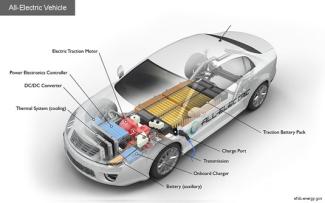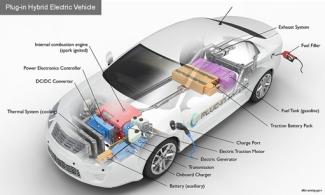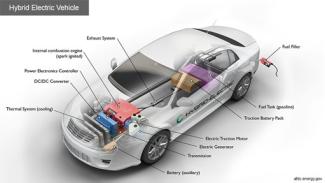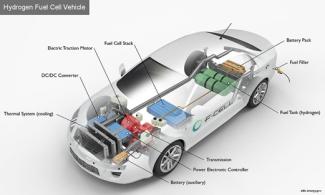Electric Vehicles Overview
Battery Electric Vehicles (BEVs)

Battery Electric Vehicles solely rely on an electric motor, in contrast to a traditional internal combustion engine that one would find in a gas-powered vehicle. Rather than a gas tank, these vehicles have a large battery pack that powers the motor and must be recharged via an outside source. Almost all BEVs can travel at least 100 miles on a charge, and many new vehicles coming on the market offer an all-electric range of 200-300 miles or more. Since Battery electric vehicles only have one power source, they often require less maintenance than Plug-in hybrid vehicles.
Over the past few years, many auto manufacturers have broken into the BEV market. Some new 2023 BEV models include the Tesla Model 3, Subaru Solterra, Mustang Mach-E and Nissan Leaf.
Plug-In Hybrid Electric Vehicles (PHEVs)

Plug-In Hybrid Electric Vehicles have a small combustion engine and an electric motor with batteries. As the name suggests, these vehicles can be plugged into an external power source to recharge the battery, but also allow for the combustion engine to charge the batteries while driving. Some models of PHEVs allow for fully electric driving with a range of 20-50 miles, accommodating shorter commutes and in-town driving. While PHEVs still partly operate on gasoline, their gas usage is 30% to 60% less than traditional gas-powered vehicles. These vehicles can also run-on gas alone when electricity is depleted.
Plug-in hybrids are produced by many manufacturers sold in the United States. Some models include the Ford Escape SE Plug-In Hybrid, the Hyundai Tucson Plug-In Hybrid, and the Toyota RAV4 Prime.
Hybrid Electric Vehicles (HEVs)

Hybrid Electric Vehicles are built with an internal combustion engine, electric motors, and battery packs to allow for improved fuel efficiency. The combustion engine recharges these batteries itself, along with regenerative braking. These vehicles differ from Plug-ins as they cannot connect to an external power source.
Hybrids are produced by many manufacturers sold in the United States. Some models include the Hyundai Elantra Hybrid, the Toyota Prius, and the Honda Accord Hybrid.
Fuel-Cell Electric Vehicles (FCEVs)

Fuel-Cell Electric Vehicles differ from traditional combustion engine vehicles and other electric vehicles as they do not use gas or external electricity sources to power the motors. Instead, they are powered by compressed hydrogen gas which is converted into electricity to power the electric motors. Due to the type of chemical reaction which occurs while powering the motor, no greenhouse gasses are produced, only water vapor and heat.
FCEVs are a new technology and therefore are produced by fewer manufacturers than other types of electric vehicles. Some examples of FCEVs are the Hyundai NEXO Fuel Cell and the Toyota Mirai.
